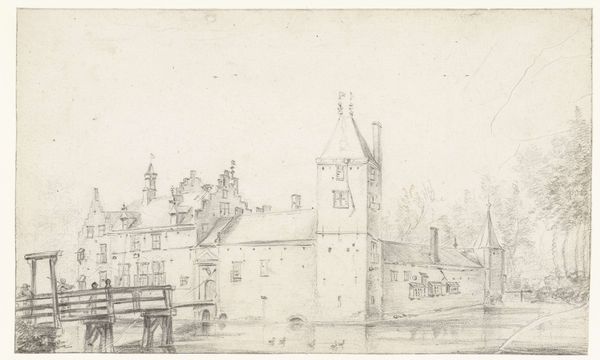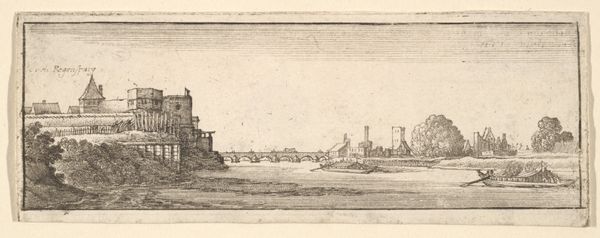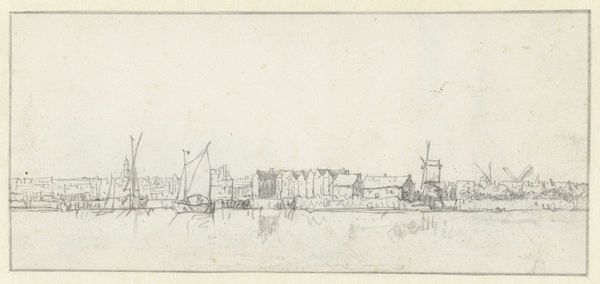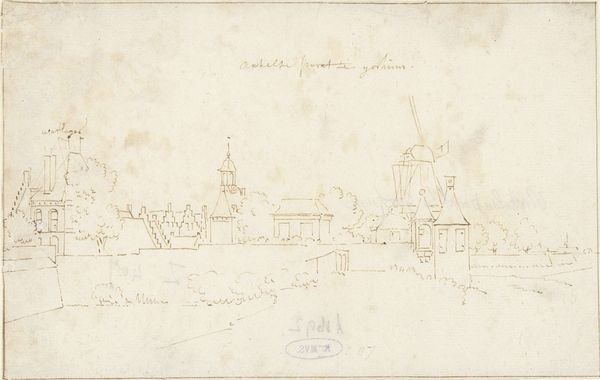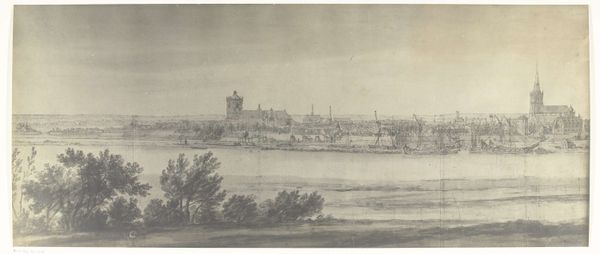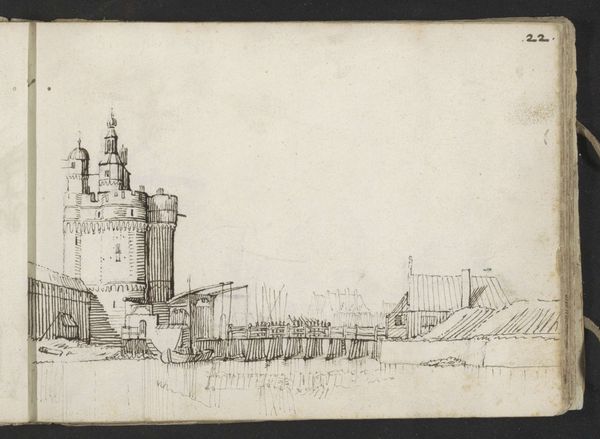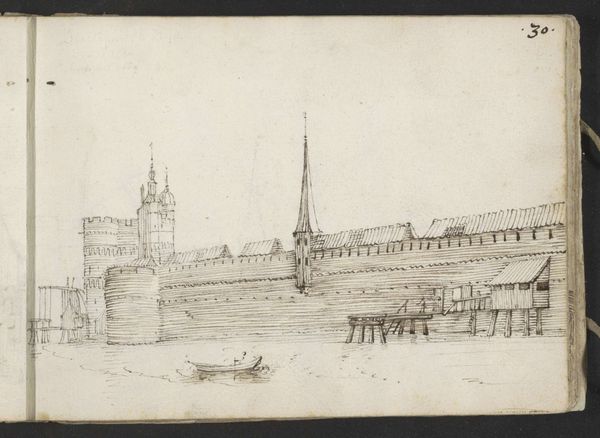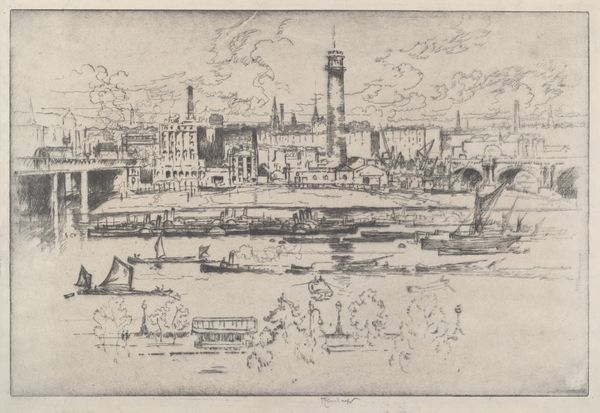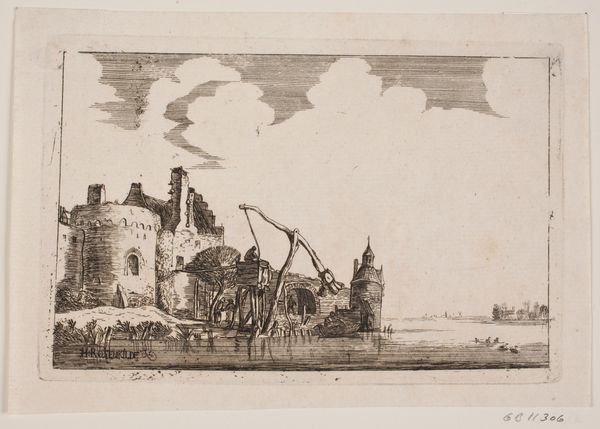
drawing, pencil
#
architectural sketch
#
drawing
#
aged paper
#
quirky sketch
#
dutch-golden-age
#
sketch book
#
landscape
#
etching
#
form
#
personal sketchbook
#
sketchwork
#
pen-ink sketch
#
pencil
#
line
#
sketchbook drawing
#
cityscape
#
storyboard and sketchbook work
#
realism
Dimensions: height 185 mm, width 305 mm
Copyright: Rijks Museum: Open Domain
Curator: Before us, we have "Lokhorst oftewel Oud-Teilingen" by Roelant Roghman, a drawing likely created between 1646 and 1650, rendered with pencil and pen. It depicts an architectural view and it is part of the Rijksmuseum collection. Editor: It possesses such a wistful quality, doesn't it? The lightness of the pencil creates a sense of faded memory, as if glimpsed through time itself. Curator: It is more than just capturing a likeness. Roghman came from a family of artists and printmakers and throughout his career he depicted castles and landscapes in the Netherlands and he clearly had a precise goal in representing and recording it. Editor: It's interesting you frame it that way. To me, the crumbling edifice invites a dialogue about power structures. Were these landscapes readily accessible or were they only open to elites? How did this artwork challenge, reinforce or exist outside such social confines? Curator: We know that country estates in that period had significant economic power, with influence over resources and land, as demonstrated in their role in land ownership and labor relations. I think it’s about the power dynamics of place during the Dutch Golden Age. The imagery of these decaying structures speaks volumes, though, hinting at decline and shifting social dynamics. Editor: Precisely! This work becomes part of a wider narrative of change and instability, challenging any nostalgic or purely aesthetic reading. The architectural precision provides an objective ground, while Roghman's aesthetic choices evoke pathos. I consider that dichotomy an intentional juxtaposition to make statements about class, privilege, and historical impermanence. Curator: These drawings give a glimpse into 17th-century Holland, as places of power and leisure but more crucially through the development of new notions of public space. Editor: This perspective shapes my understanding and makes me re-evaluate its place in historical discourse. It also challenges me to recognize these visual cues in our contemporary visual culture.
Comments
No comments
Be the first to comment and join the conversation on the ultimate creative platform.
